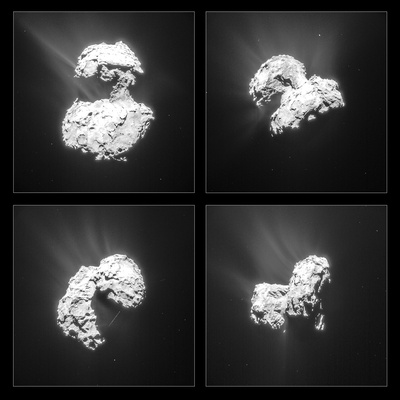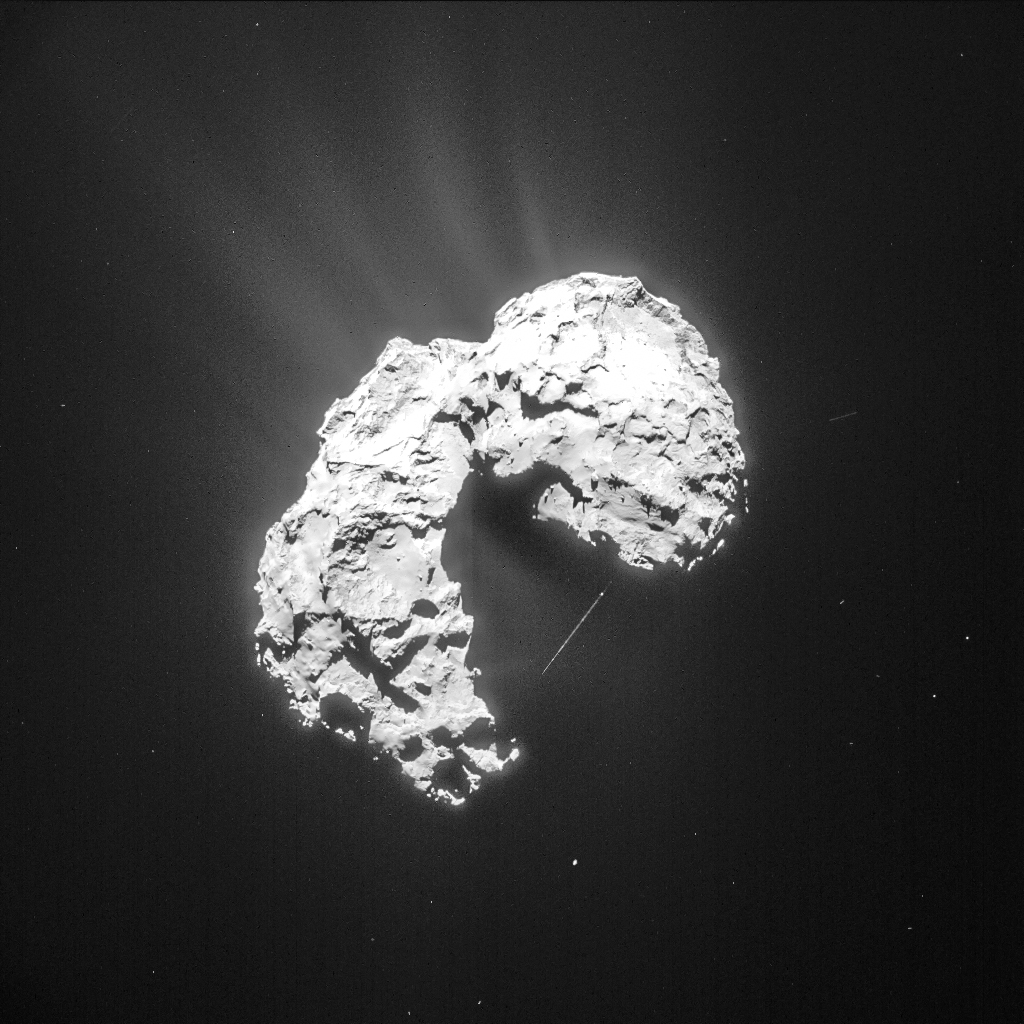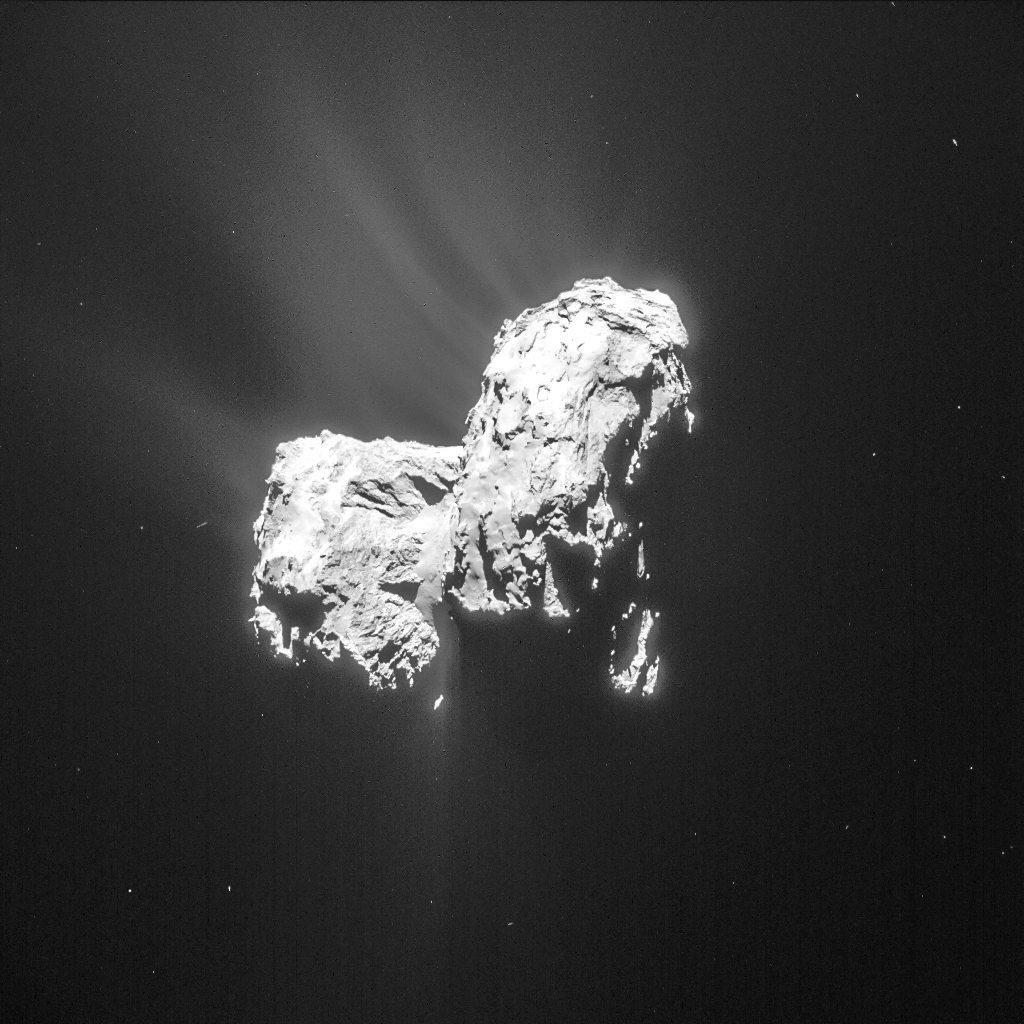All-round activity – CometWatch 25-26-27 February
While most of Rosetta’s NAVCAM images are taken for navigation purposes, these images were obtained to provide context in support of observations performed at the same time with the Alice ultraviolet (UV) imaging spectrograph on Rosetta.
Alice makes its observations through a narrow, long slit (you can read about Alice’s first far-UV spectra and find an animation showing the size and shape of its field of view in an earlier blog post), and scientists use NAVCAM images taken at the same time as the spectra to identify where the slit was located on the comet, including which parts were pointing to an illuminated portion of nucleus, which to a region in shadow, or off the nucleus altogether. Earlier in the mission, these NAVCAM context images were taken as strips centred on the position of the Alice slit, but lately full-frame NAVCAM images have been taken in support of the Alice observations instead.
The exposure time used for the four images in today’s CometWatch post was roughly 2 seconds. Also, the phase angle was very small at the time, meaning that the Sun was illuminating the comet from behind Rosetta. This geometrical configuration combined with the relatively long exposure time has caused some parts of the nucleus to be slightly over-exposed.
The over-exposure is not a concern for Alice, as the scientists only need these images to locate the position of the slit with respect to the comet’s nucleus. However, as the images are partly saturated, we decided to process them in a way that focuses on activity in the coma rather than on the details of the nucleus.
The four images show the nucleus at different orientations, providing a good overview of the comet’s activity over the time interval between 25 and 27 February 2015.
Below we give a brief description of some of the regions visible in these four images, to help you find your way around the comet in the various orientations. You can also find regional maps of 67P/C-G here and here.
In the 25 February image, the nucleus is oriented with the small comet lobe up and the large one below. On the comet’s neck, the Anuket region is visible, while Hathor (to its left) is in shadow. Parts of the smooth Hapi region can also be seen at the bottom of the neck.
In the 26 February image, the nucleus is oriented diagonally, with the small comet lobe to the upper left and the large lobe to the lower right. The view is dominated by the regions on the comet’s neck, namely Hathor, Anuket, and Hapi.
The first 27 February image shows the small lobe in the foreground, offering a great view on the Hatmehit depression. A very long streak, possibly created by a particle in the foreground, is also visible in the shadow cast by the small lobe.
The second 27 February image shows the comet with the large lobe to the right and the small one to the left. The image also provides a nice view on the cliffs of Hathor and the smooth Hapi region on the comet’s neck.
The orientation of the last image is very similar to that of the four-image mosaic published earlier this week as CometWatch 26 February, albeit with small differences, as Imhotep (on the underside of the large lobe) is now almost completely cast in shadow. Comparing these two images reveals a very similar level of activity in the upper part of the frame, suggesting that there are no rapid changes in the outflow structure.




